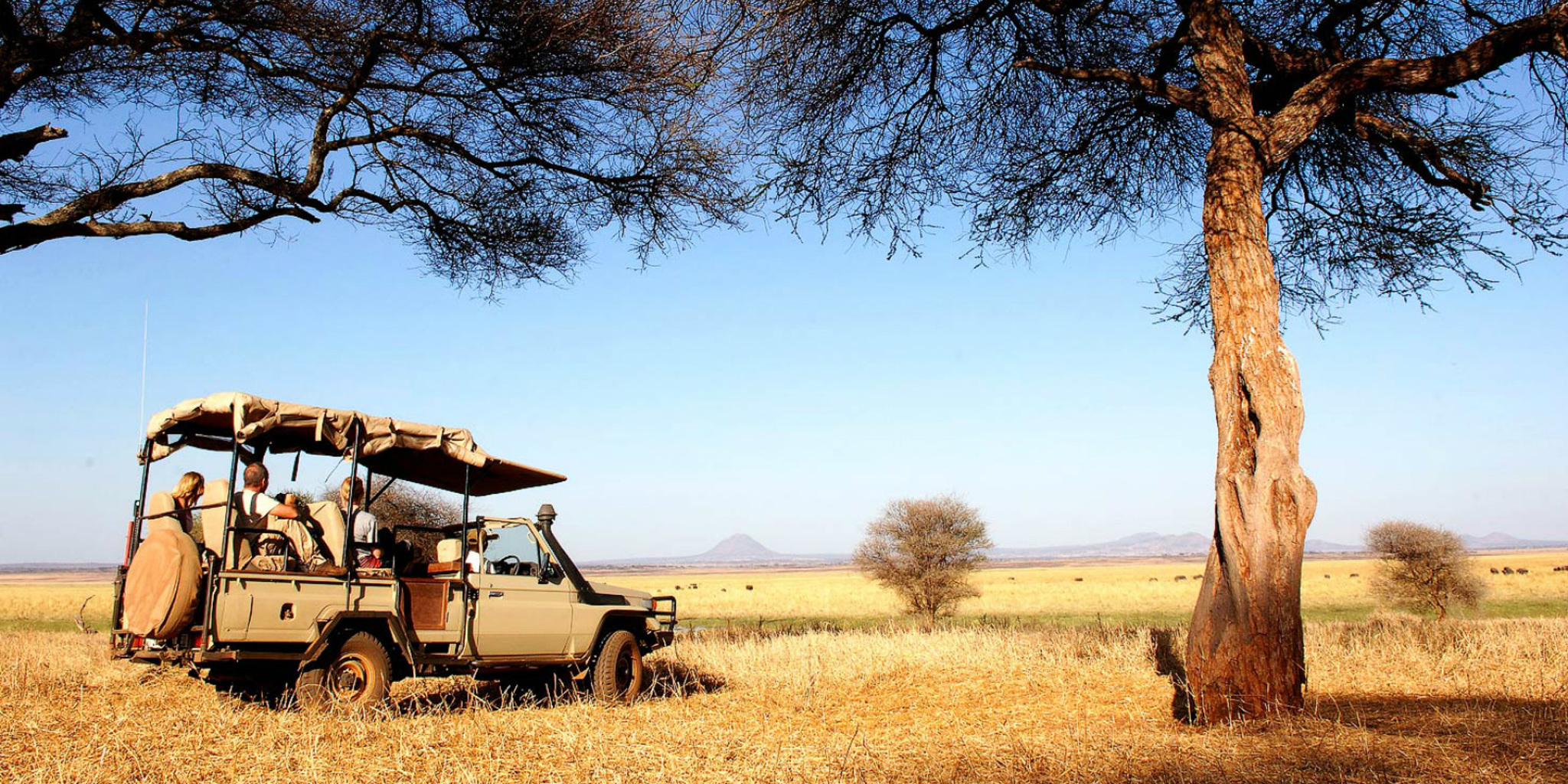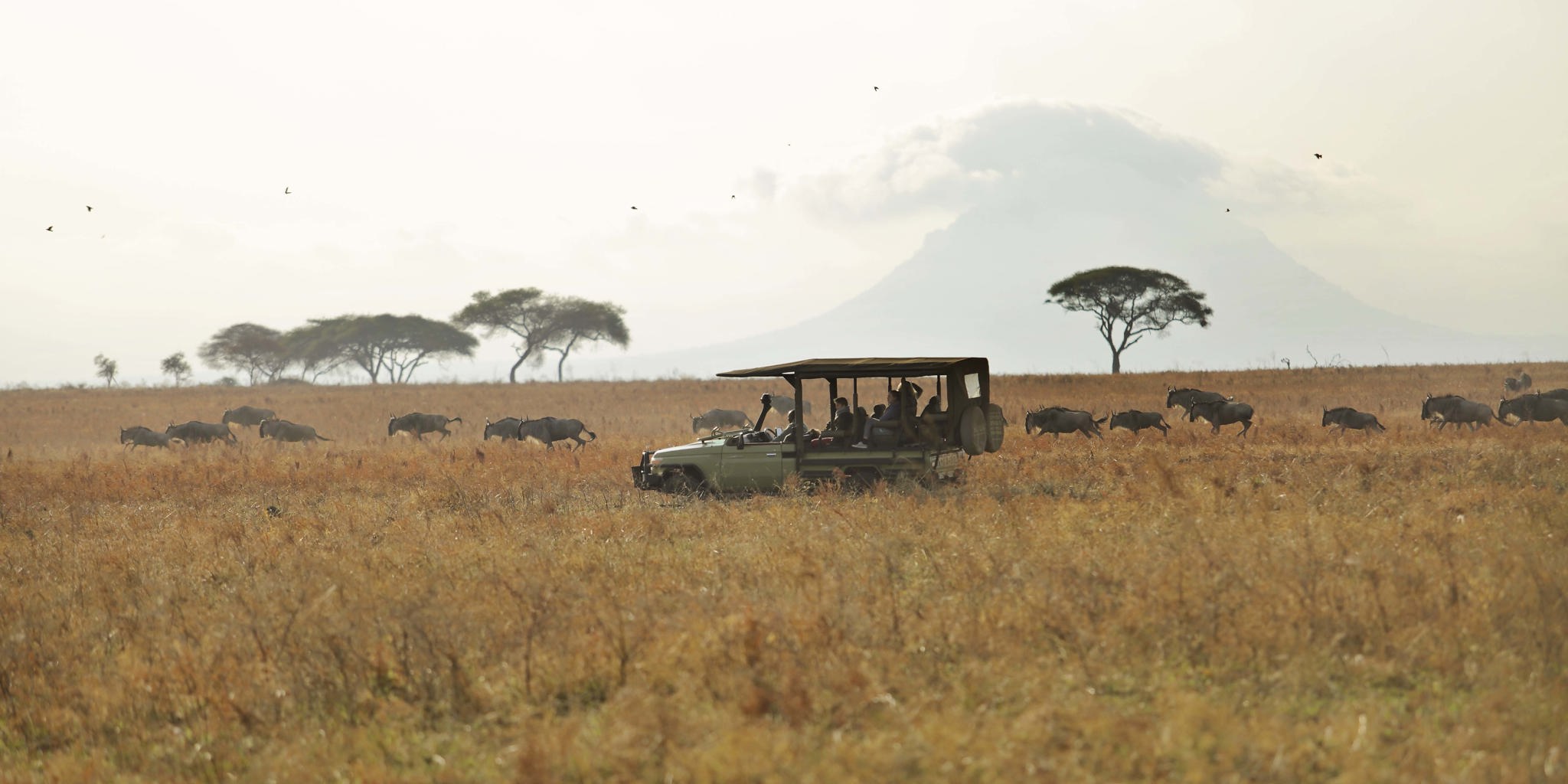Offering a completely different habitat from its more famous neighbours at Ngorongoro and Serengeti, Tarangire’s habitat is much more similar to that of the parks in southern Tanzania, especially Ruaha. Tarangire’s most appealing charm is its lack of visitors and its sheer size. Tarangire dwarfs Lake Manyara, and takes fewer visitors! Those that do travel this far tend to visit for a short period of time, and see only the northern sectors of the park before they rush off elsewhere. This leaves the south of the park feeling truly remote and free of tourists.
Can I see the big five in Tarangire
Unfortunately, due to the lack of rhino in Tarangire, it is not possible to view the Big Five here (rhino, elephant, buffalo, lion and leopard!). However, Tarangire is one of the most famous places in Africa to see elephant. Approximately 3,000 elephant descend into the Tarangire swamp system in the peak of the dry season – it is a quite phenomenal site. Buffalo are common also, as are lion, but viewing leopard is tricky here. Over a three-day stay we would expect you to be lucky enough to view leopard, but it certainly cannot be guaranteed.
General game in Tarangire
Without doubt, the most impressive feature of Tarangire is the park’s elephant migration, when huge herds push through to Tarangire’s river system and swamps during the dry season. Due to the astonishing abundance of elephant in the park, this truly is a spectacular scene. In fact, Tarangire contains the greatest numbers of elephant in northern Tanzania! But these are not the only animals to be attracted in immense concentrations to the park’s water sources during the dry spell – and Tarangire is home to many species all year round.
There are plenty of lion and leopard in Tarangire, present throughout the year and effectively setting up camp close to the Tarangire River from June to October to be near the gatherings of game. Tree-climbing lions are fairly common too! Cheetah, however, are relatively rare. Other carnivores that roam the rolling acacia and baobab woodlands, riverine forests and dense grass, include hyena, jackal and wild dog, though wild dog are scarce and favour other areas within the Maasai Steppe.
It is the herbivores that contribute most to the overall wildlife count in Tarangire. In addition to the enormous amounts of elephant, the park is chock-full of wildebeest, zebra, eland, impala, greater and lesser kudu, dik-dik, Coke’s hartebeest, Thomson’s gazelle, giraffe, buffalo, reedbuck, waterbuck, warthog, hippopotamus, mongoose and rock hyrax! There are even a couple of unusual antelope species – the fringe-eared oryx and the gerenuk. Black rhino are very seldom seen here, but it is believed that a few individuals dwell in the more remote regions of the park.
Birds frequent Tarangire in breathtakingly big populations – with over 500 species recorded to date, the park is truly a birdwatcher’s paradise! As the topography of Tarangire is so vast and varied, there is an outstanding range of feathery friends to encounter – ostriches, eagles, lovebirds, weavers, barbets, parrots, pelicans, nightjars, starlings, babblers, and the intriguingly named bare-faced go-away bird! Be sure to pack your binoculars, if birding is your thing.
When to go for game?
As with the majority of parks in ‘Safari Africa’, Tarangire is a classic dry-season park with the game concentrations getting progressively better later in the year. July through to October is when the big herds concentrate themselves on the Tarangire river system – this is the best time of year to travel. For the remainder of the year the herds move south to the Maasai Steppe, with some animals also heading in the opposite direction and being recorded as far north as Amboseli in Kenya! Out of season is a great time to travel here as visitors will find a park delightfully void of visitors and access it for the amazing low-season prices… but Tarangire will also be missing the majority of its game! Of course, resident game remains and the park is still fascinating in our opinion – but there is a noticeable drop in game densities when the herds leave.
When to go for value?
As with so many places in Africa, the periods just on the edge of peak season and low season itself are when you can get the best value in the park. We have always suggested that travelling around the 1st November is a great time of year to go. The lodges all drop their rates on this date and considering the rains have not yet set in you can get August/September game viewing for low-season prices!
Activities in Tarangire
The main activity inside the park has always been standard game drives, but over the last few years TANAPA (the National Park Authority) has introduced a number of activities that are the envy of other national parks. Each lodge offers different activities, but the majority focus on standard game drives. Tarangire is the only national park in Tanzania where it is possible to do night safari as well as walking and fly camping, making it the northern park with the greatest diversity of safari activities. The hidden gem of the Northern Circuit.
YZ favourite camps & lodges in Tarangire
There are just a couple of good camps in the best locations inside the park. Our favourites are Kuro, Oliver’s and Swala, but we also like the more adventurous approach of Lemala and Mawe Ninga.
Tarangire top tips
- First things first – stay inside the park! Travelling to and from Tarangire’s main gates at the beginning and end of a game drive can get repetitive – and means you have to leave the park earlier than you normally would.
- Stay as far into the park as you can. The northern parts of Tarangire are synonymous with high traffic build-up and somewhat hectic game-drive areas. There are only a couple of game-drive circuits in the northern part of Tarangire and in the peak season these routes get so heavily used we try to avoid them. Kuro, Swala, Oliver’s, Little Oliver’s, Balloon Camp Tarangire and Nasikia Ndovu are tucked away off this northern area – focus your time here.
- Do not underestimate this park! Known as the hidden gem of Tanzania’s Northern Circuit, Tarangire really is a delight. Parks like Lake Manyara and the Ngorongoro Crater are very busy in peak season. Tarangire, however, always retains an authentic charm that these busier parks have lost. Include it where possible and stay for a minimum of two nights.
- If you are the kind of client who likes staying off the beaten track, there is a very good argument that just visiting Tarangire and the Serengeti is the right thing to do. There is no doubt that these parks are where enthusiasts would say ‘real’ safari can be found… and that missing out on the Ngorongoro Crater and Lake Manyara is actually a clever thing to do!
- Be careful when driving the Northern Circuit. One of the most common errors we see on clients’ trips from other companies is the willingness to squeeze as much into an itinerary as possible. We have been asked to include a game drive in Tarangire on the way to Manyara, for example – this is possible but certainly tiring! It is most often recommended by inexperienced operators looking to tick off the highlights.
- Driving to Tarangire is something we do, but you have to design your trip carefully because it does involve a significant amount of hours on the road. The key here is simply to make sure you understand how much driving you are doing and to drive up through the lower part of Lake Manyara National Park rather than taking the main road.
- Tsetse flies. Know what they are? Be prepared… tsetse love Tarangire!
 Australia
Australia
 UK / International
UK / International
 USA
USA
 CA
CA




























